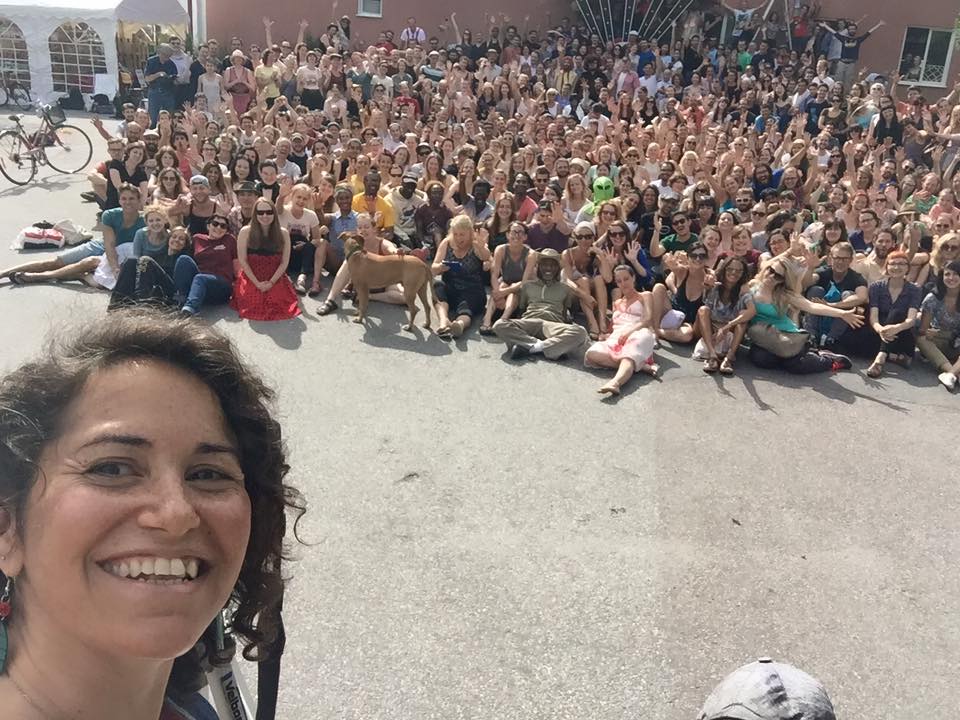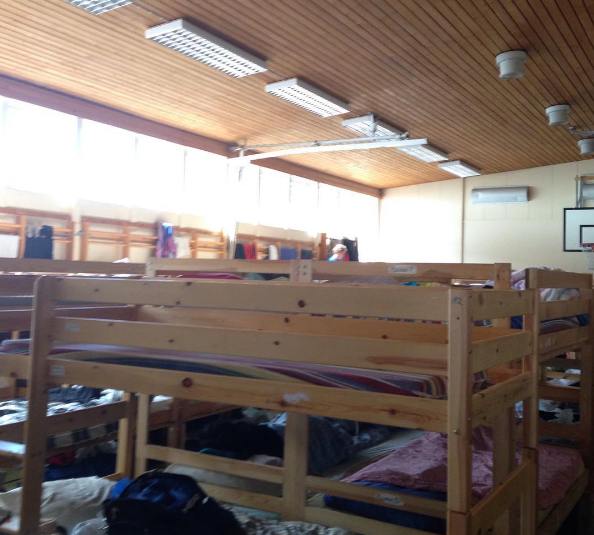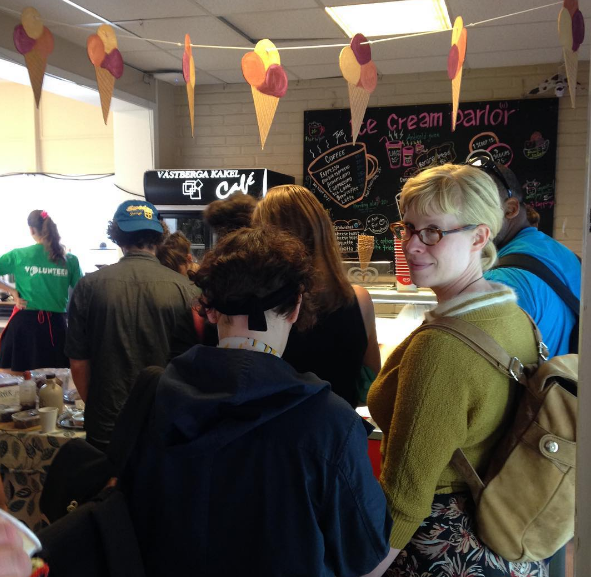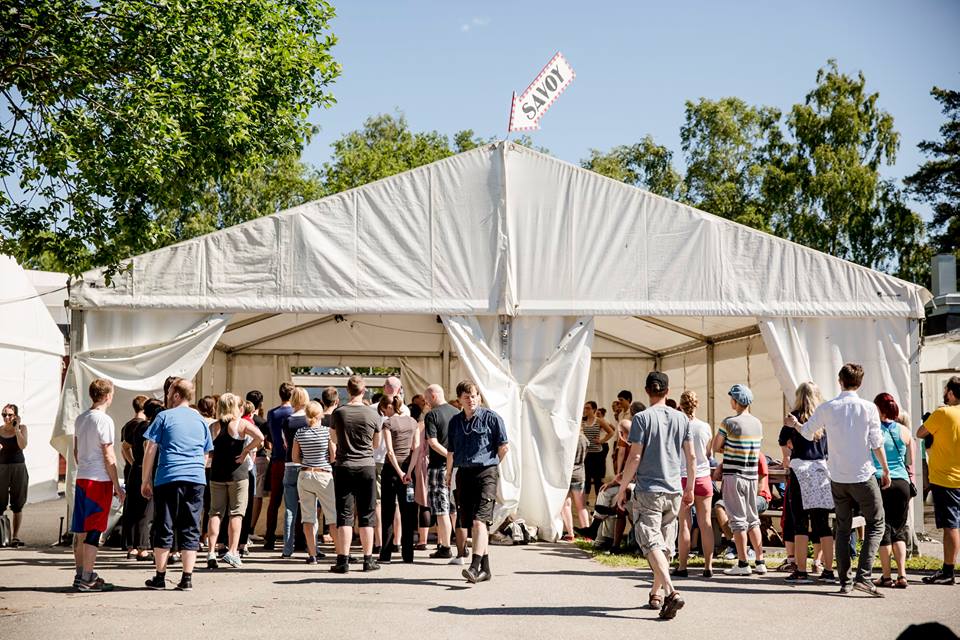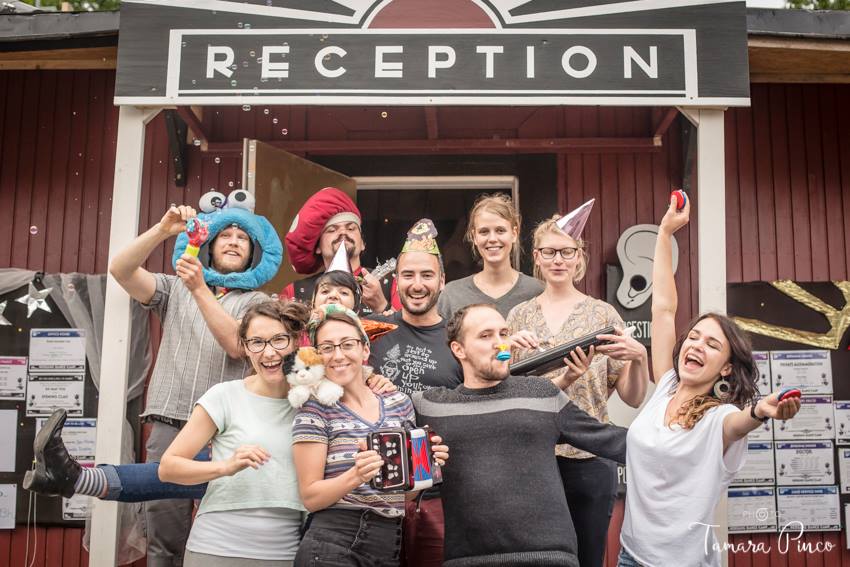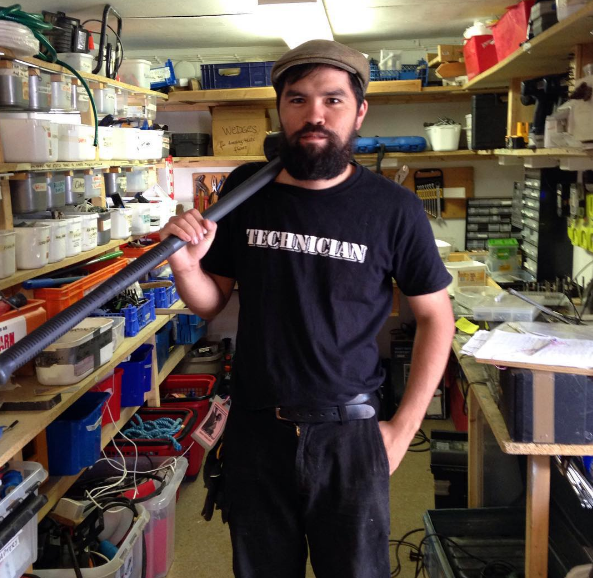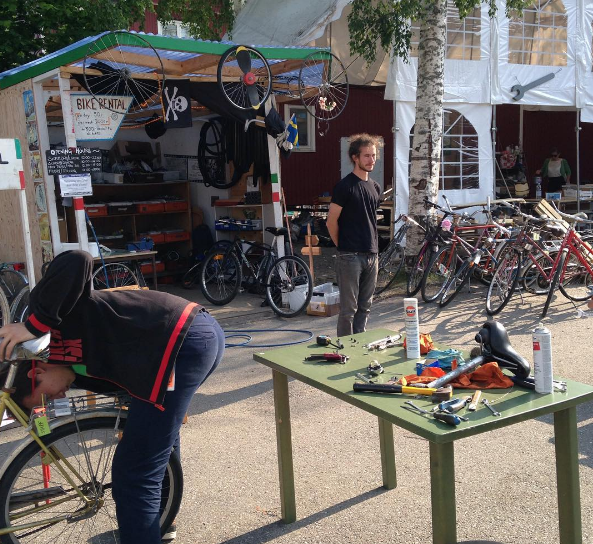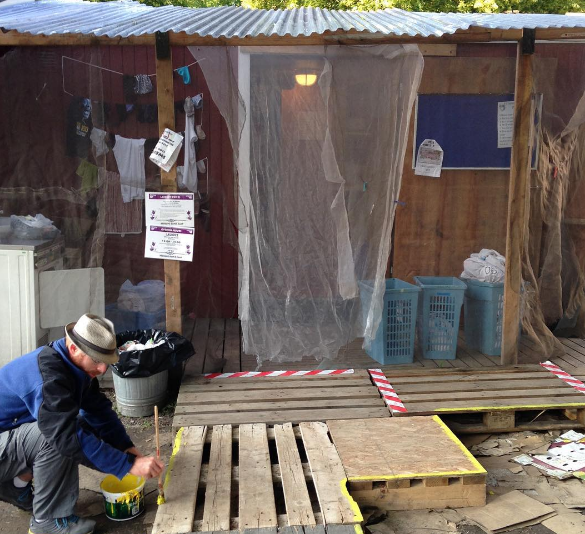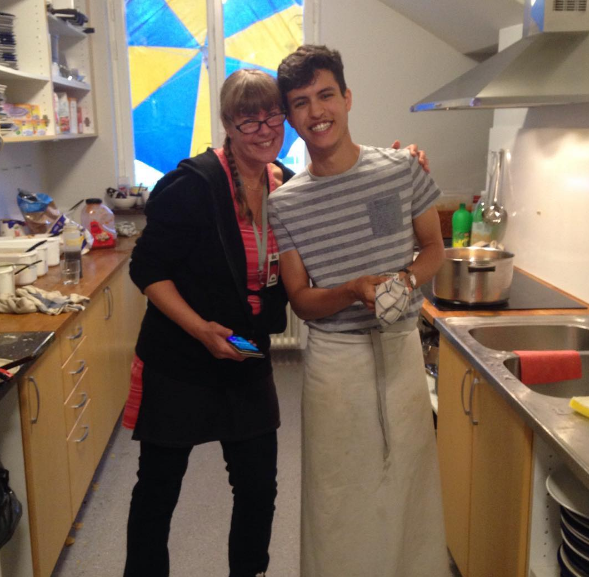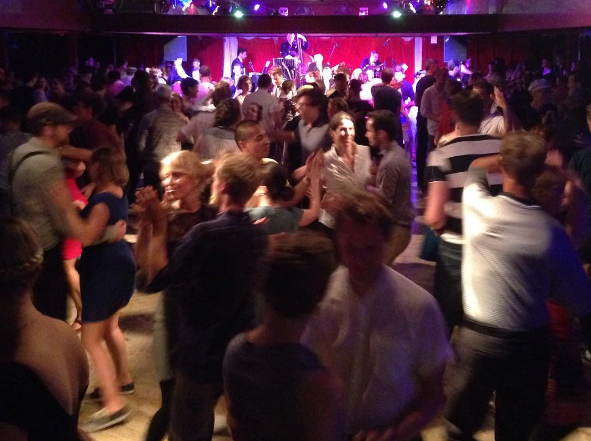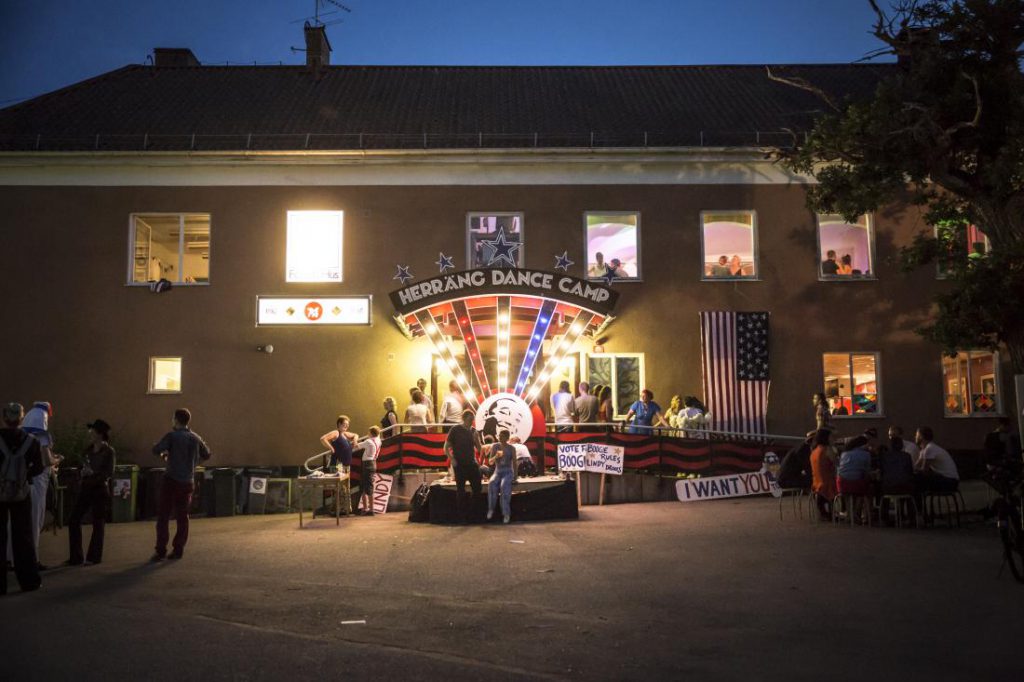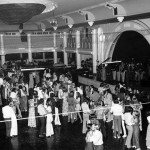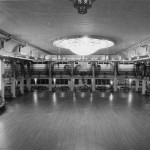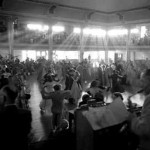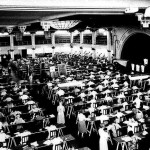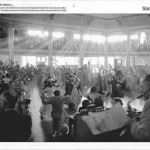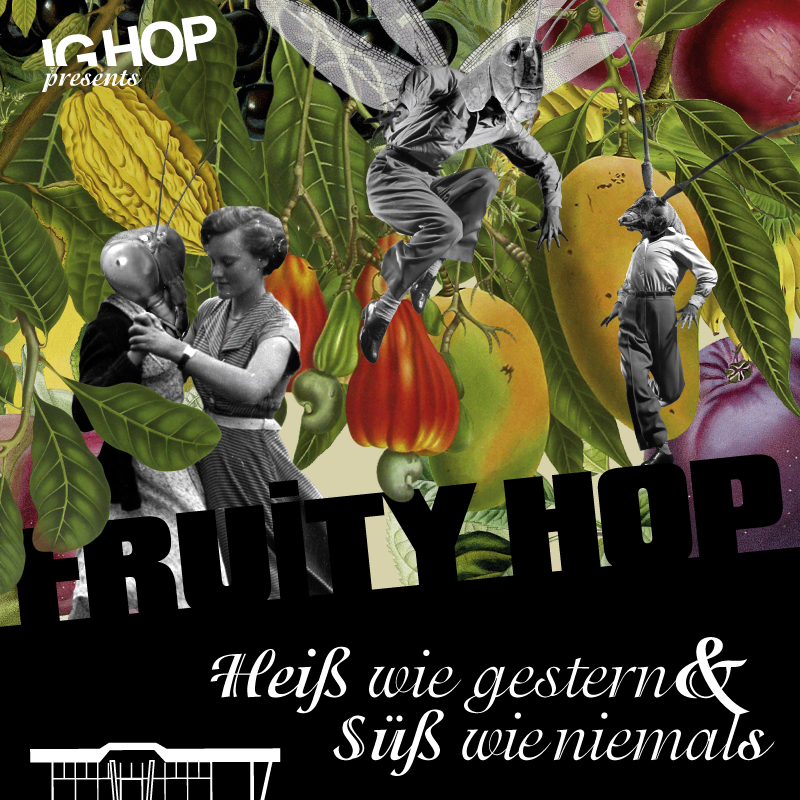Once again, I’m writing a post that’s meant to be short, but will no doubt be enormous.
This summer I was a staff DJ at Herräng Dance Camp for week 3 of the 5 week camp. You can read about Herräng in this post.

Herräng uses staff DJs and volunteer/guest DJs for music each night on its three (or occasionally more) dance floors. There are also unofficial official staff DJs who provide music for the special themed Midnight Ramble parties in the library. Staff DJs are provided with a pretty good renumeration package (which I can’t go into online because confidentiality, but can discuss in person), and guest DJs are given free entry to the night they DJ.
Staff DJs’ duties include:
- Regular meetings about DJing;
- DJing every night for 7 days, at any time between 10pm and 11am the following day;
- DJing in blocks of at least 2 hours at a time;
- DJing to the Herräng music brief;
- Being available for other themed or special sets (eg early RnB, shared sets, competitions, taxi dances, shows, band breaks, afternoon dances, etc);
- DJing for lindy hop, balboa, slow drag, boogie woogie and solo dance.
And usually a few other random things are expected of you (eg dropping in to meetings or talks about DJing and music, mentoring or riding shot gun on newer DJs’ sets, being ‘around’ and participating in camp life).
All of this is most excellent fun, very fulfilling, but quite tiring. It is definitely a full time job. And the role requires professionalism (being on time, having all the gear, being good to work with), practical skills (knowing how to work a mixing desk, how to DJ comps or special dances, mic skills, can keep the floor not only full but exciting and interesting for several hours), and a solid musical collection.
All the DJs I’ve worked with at Herräng have extensive music collections (far beyond the lindy hopping ‘favourites’), and devote hours each week to preparing sets and making sure they have an idea of what they might play. This preparation is a continual response to what’s happening in camp, the music they hear each night, the bands playing each night, and the general mood or vibe of the event.
And all the staff DJs also have a creative instinct that makes them suggest ideas for special sets, shared sets, or just general party ideas.
Volunteer or Guest DJs have a different job.
They are booked on a per-set basis, doing one set at a time, usually for one to two hours only, and may not be asked to DJ again during their stay. They must also play to the Herräng music brief, and submit previous set lists. The usual professionalism and practical skills are required. Most of the guest DJs are also then recommended or vetted by an experienced DJ or dancer.
Basically, you can’t just walk in and ask to DJ then score a spot. This is as per normal for any large, reputable event.
The Midnight Ramble DJs have a different role again. They usually have very specialised collections and/or skill sets. eg they may DJ an early RnB set, a latin set, or a slow drag set. This means that they have extensive collections of these types of music, and special skills. They’re often DJs who use vinyl or shellac, and are vastly experienced, working with the particular demands of this themed room/party.
All Herräng DJs are managed by the DJ managers. This year and last, the managerial role was shared by two very experienced DJs who also have a lot of experience with Herräng. This year we were lucky enough to have Meghan Gilmore (Canada) and Jonas Larsson (Sweden) as our managers.
Each day the managers liaise with the various stage managers, event managers, and other Herräng staff to put together a program of DJed music on three (or more) dance floors that begins at 10pm and can end as late as the first class in the folkletshus ballroom (ie 11am or later). This program juggles live performances by bands and other acts, the evening meeting, the demands of particular parties (eg Midnight Rambles, the beginner hour, balboa nights and so on), and each DJs’ skills, preferences, and workload. There are frequently last minute changes to the program, and both managers and DJs need to be able to respond enthusiastically, calmly, and competently to changes.
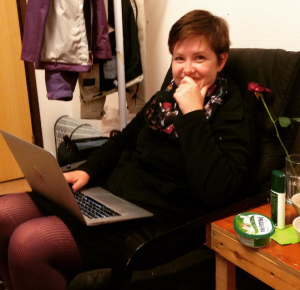
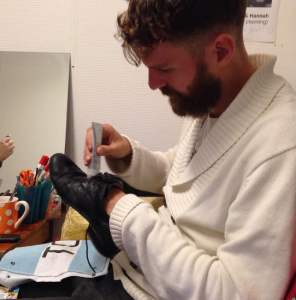
Meghan and Jonas were the best DJ managers I’ve ever worked with, in ten years of DJing. They were calm, professional, and very excellent company. They know HEAPS about music, are very experienced DJs, and were just wonderful to work with. I felt that they really had my back and were supporting me at all times. Even when my laptop died on day 1 of my contract, they were right there holding my hand. Or at least sending me comforting fb messages. They also knew how to lead, and how to put the breaks on madcap schemes that were a little too madcap. DJs can be quite headstrong and a little too sure of themselves (and their schemes) sometimes, and both Meghan and Jonas were very good at curbing in some of the less sensible scheming. Which I think is very important. I want to know my DJ managers have limits and a clear sense of what they want, and what is achievable, so that I can just go ahead and be full-on DJ nut, knowing they’ll say No when No needs to be said.
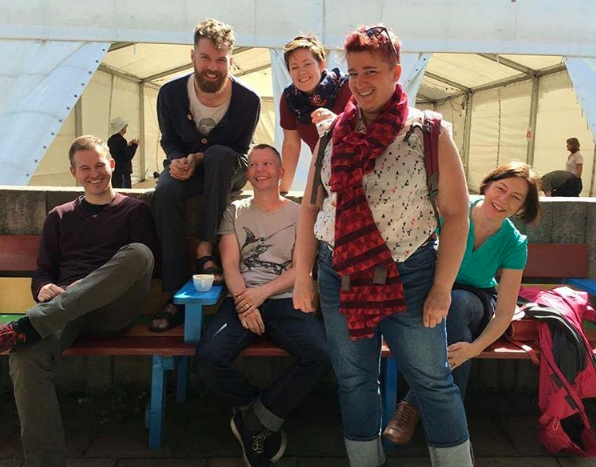
Meghan and Jonas also put quite a bit of work into developing a sense of team camaraderie. They provided a comfortable office close to other Herräng staff offices, so that we could both have a place to store our stuff and work quietly, and also meet and mix with other staff. We found our office was often a popular place for unofficial catch-ups and socialising by other staff. Not as rowdy as other offices, not as full-on as other offices. The fact that there was always a stack of records or someone wanting an opinion on a particular song was only a bonus for camp where pretty much everyone is music obsessed.
We also had a couple of organised dinners and DJ-friendly parties/catch ups, which were very nice. I found that this team of DJs gelled particularly well. I adore them all, and I miss them SO much. I loved their music, I loved their commitment to DJing, but I also really liked their ‘let’s have FUN!’ approach to dancing and DJing. And they made me laugh like a fool, so many times. Having a good, solid team of buddies around me really made the long hours and challenges of staff DJing easier. And I learnt a LOT about music and DJing from them all. It was really lovely to be part of this group.
This year the DJing at Herräng was particularly good. Jonas and Meghan had worked hard to find DJs beyond the usual subjects. They found DJs from all over the world, who were both excellent DJs, and had excellent taste in music. And, incidentally, they had gender parity in weeks 2,3,4, and 5 of the 6 weeks of the camp. This is very unusual in the lindy hopping world, and the consequences were very interesting. Things I thought this gave us, as dancers:
- A wider range of DJs, people I’d never heard before, and who had interesting, new ways of thinking about DJing;
- A wider range of DJing styles and musical collections;
- Better music for dancing;
- A much more interesting and fun working environment: this wasn’t a DJ Bro team. It was a diverse, interesting group of people who worked fucking hard, valued great music, but could work a crowd like fucking ROCKstars;
- As a whole, two of the clearer consequences were crowded, crazy dance floors, and crowds who stayed up much later dancing. As a DJ and dancer, I found myself spending more time hanging around the DJ booth listening to the DJs who were working, or sitting next to them listening to them work. It was very exciting, and the BEST fun.
Who was on staff in Herräng this year?
Week 1:
Ralph Hueur(Boogie) [Germany], Felix Berghäll (Boogie) [Sweden], Philippe Crompton-Roberts [Hong Kong], Jon Tigert [USA]
Week 2:
Christina Loukaki [Greece], Jon Tigert [USA], Arnas Razgūnas [Lithuania], Leru [ Russia/China],
Week 3:
Sam Carroll [Australia], Heidi Van Der Wijk [ Netherlands], Anton Cervin [Sweden], Jonas Olsson [Denmark]
Week 4:
Birkley Wisniewski [Canada], Helena Martins [Brazil], Laura Spencer [USA/Germany], Dan Repsch [USA]
Week 5:
Kris Bauwens [Belgium], Susanne Kenross [Sweden], Haerim Kim [South Korea], Sage Min [ South Korea]
Featured Guest DJs:
Frida Häggström (week 1 to 5), Big Papa Mac (week 1 to 3), Natty Bo (July 20 and 21), Stephan Wuthe (week 3 and 5)
Guest/volunteer DJs included:
Arnas, Pontus ?, Philippe, Jonas Olsson, Sam Carroll, Alexey Kazannov, Felix, Miroslav Mironov, James Pack, Olov ?, Vasily Muravyev, Olga Moiseeva, Jon Tigert, Nathan ?, Skye Humphries, Gaston Fernandez, Veit, Rasmus, Daphna Harel, Soo chan Lee, Leo Newman, Ramona Staffeld, Ingrid ?, Naomi Uyama.
As you can see, some of the staff DJs also did some volunteer DJing. For me, it was in week 2 so I could get rid of some nerves and settle down to DJing. People like Jon T just have mad skills and love DJing. People like Olga are THE BEST.
I have to pause and rave about a couple of those volunteer DJs. Olga Moiseeva from Moscow (now based in Brussells). WOW. Just the best. She has mad skills. And has also been a key player in Moscow becoming the historically grounded, fun-centred lindy hop scene it is today. Vasily Muravyev, also Russian, still based in Moscow, has been one of those people who DJs regularly at home, and SHOULD have been DJing at bigger events like Herräng, but just needed a bit of a push to get into it. Gaston is of course, an experienced, fantastic DJ, and one of my favourites. Other DJs in this list did some lovely work too. I didn’t hear any shithouse DJing. Which is a testament to Meghan and Jonas’ hard work and carefully vetting of DJs.
But my favourite was Naomi Uyama. Yes. That Naomi. Sure, she’s a grand lindy hopper. We know that. I reviewed her band’s first album in this post and did a follow up post here.
It should surprise no one that such a talented band leader is also a fantastic DJ. But, having said that, there are a few band leaders who are also DJs, but not terribly awesome DJs.
What made her so good? 1) Song choices. Familiar, unusual, all awesome, 2) The way she put them together.
Shit. She is just such a fucking great DJ.
In sum, my picks for a superhot DJ team from Herräng’s guest DJ team would include Olga, Naomi, Frida Häggström, Vasily, and probably John Tigert. John is an interesting one, as at first glance he seems a bit of a cowboy, prone to showing off. But I’ve found over the last couple of years that I’ve ended up sitting next to him while he DJs a few times. Because he’s such a thoughtful, inspired DJ. He kind of settles into the job, focussing on the dancers, with a really good feel for what they feel, and then making good, solid, creative songs choices to work with those feels. Frida is kind of intimidating, as she’s quite reserved, but you shouldn’t let that stop you getting to know her, and her DJing. She can basically do anything. Anything old, and anything fucking GOOD. I once danced like a crazy fool to a 20s dance band set she did in the library. Not something I’d usually dig, but mate. She has SKILLS. And an unparalleled collection. Get to know her, and get to know her collection: she is A1.
I’d also make sure you had Arnas from Lithuania on that team. He’s fun, and he makes a very good coffee. He’s also a skilled DJ, who is prone to DJ cowboyism. But it always pays off.
I could go on and on and on about the DJs from Herräng this year that I loved. Heidi from Rotterdam: what a fucking gun. Tireless, fearless, fierce. Excellent. Anton and Jonas, Jonas and Meghan. Really, the very best.
Such most excellent fun. Did enjoy. Would do again.

